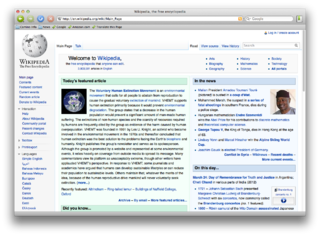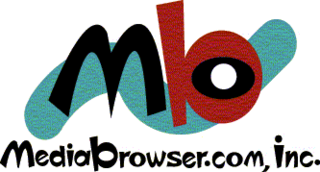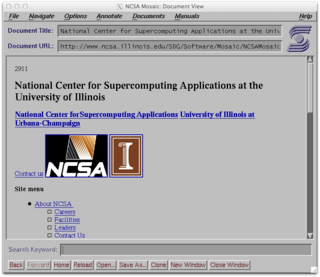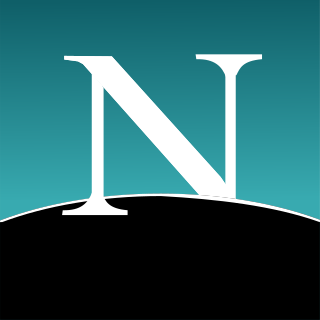 W
WAirMosaic was an early commercial web browser based on the NCSA Mosaic browser.
 W
WAmaya is a discontinued free and open source WYSIWYG web authoring tool with browsing abilities.
 W
WAMosaic is a discontinued Amiga port of the Mosaic web browser, developed beginning in 1993, and was the first graphical web browser for the Amiga. AMosaic was based on NCSA's Mosaic, but was not distributed by the University of Illinois or NCSA. It was developed by Michael Fischer at Stony Brook University, Michael Meyer at the University of California, Berkeley, and Michael Witbrock at Carnegie Mellon University. The first version was released to the public on December 25, 1993, and the last version available was a 2.0 prerelease.
 W
WAOLpress is a discontinued HTML editor that was available from America Online (AOL). It was originally developed as NaviPress by the company NaviSoft before being bought by AOL. It was discontinued in 2000. However, the last version (2.0) may still be found on some Web sites for downloading. AOLpress was rather strict about enforcing legal HTML: when saving edited pages that were created outside AOLpress, code that did not conform to the HTML 3.2 standard and specifications may have been changed to do so. Today, the HTML code used is very outdated and may not display more recent Web sites correctly. It does not support PNG images, and this limits its support on many sites where the newer PNG format has been adopted.
 W
WArachne is a discontinued Internet suite containing a graphical web browser, email client, and dialer. Originally, Arachne was developed by Michal Polák under his xChaos label, a name he later changed into Arachne Labs. It was written in C and compiled using Borland C++ 3.1. Arachne has since been released under the GPL as Arachne GPL.
 W
WThe Arena browser was one of the first web browsers for Unix. Originally begun by Dave Raggett in 1993, development continued at CERN and the World Wide Web Consortium (W3C) and subsequently by Yggdrasil Computing. As a testbed browser, Arena was used in testing the implementation for HTML version 3.0, Cascading Style Sheets (CSS), Portable Network Graphics (PNG), and libwww. Arena was widely used and popular at the beginning of the World Wide Web.
 W
WAT&T Pogo was a Mozilla Firefox based web browser developed by AT&T and Vizible. A private beta was released to a limited number of users, but the project was terminated when Vizible sold its intellectual property to Open Text.
 W
WBlazer was a web browser available for Palm handhelds running Palm OS 3.1 or higher.
 W
WDR-WebSpyder is a DOS web browser, mail client and operating system runtime environment that was developed by Caldera UK in 1997. It was based on the DR-DOS operating system and networking components from Novell as well as the Arachne web browser by Michal Polák of xChaos software. The system was designed to run on low-end desktop systems, but being able to boot and execute from disk as well as from ROM or network, it was also tailored for x86-based thin clients and embedded systems with or without disk drives. Using the web browser as its principal user interface, it could be also used for kiosk systems and set-top boxes. Named Embrowser, it has been ported to Linux in 1999 and was called Embedix Browser since 2000.
 W
WCamino is a discontinued free, open source, GUI-based Web browser based on Mozilla's Gecko layout engine and specifically designed for the OS X operating system. In place of an XUL-based user interface used by most Mozilla-based applications, Camino used Mac-native Cocoa APIs. On May 30, 2013, the Camino Project announced that the browser is no longer being developed.
 W
WCello is an early, discontinued graphical web browser for Windows 3.1; it was developed by Thomas R. Bruce of the Legal Information Institute at Cornell Law School. It was released as shareware in 1993. While other browsers ran on various Unix machines, Cello was the first web browser for Microsoft Windows, using the winsock system to access the Internet. In addition to the basic Windows, Cello worked on Windows NT 3.5 and with small modifications on OS/2.
 W
WDR-WebSpyder is a DOS web browser, mail client and operating system runtime environment that was developed by Caldera UK in 1997. It was based on the DR-DOS operating system and networking components from Novell as well as the Arachne web browser by Michal Polák of xChaos software. The system was designed to run on low-end desktop systems, but being able to boot and execute from disk as well as from ROM or network, it was also tailored for x86-based thin clients and embedded systems with or without disk drives. Using the web browser as its principal user interface, it could be also used for kiosk systems and set-top boxes. Named Embrowser, it has been ported to Linux in 1999 and was called Embedix Browser since 2000.
 W
WELinks is a free text-based web browser for Unix-like operating systems.
 W
WDR-WebSpyder is a DOS web browser, mail client and operating system runtime environment that was developed by Caldera UK in 1997. It was based on the DR-DOS operating system and networking components from Novell as well as the Arachne web browser by Michal Polák of xChaos software. The system was designed to run on low-end desktop systems, but being able to boot and execute from disk as well as from ROM or network, it was also tailored for x86-based thin clients and embedded systems with or without disk drives. Using the web browser as its principal user interface, it could be also used for kiosk systems and set-top boxes. Named Embrowser, it has been ported to Linux in 1999 and was called Embedix Browser since 2000.
 W
WDR-WebSpyder is a DOS web browser, mail client and operating system runtime environment that was developed by Caldera UK in 1997. It was based on the DR-DOS operating system and networking components from Novell as well as the Arachne web browser by Michal Polák of xChaos software. The system was designed to run on low-end desktop systems, but being able to boot and execute from disk as well as from ROM or network, it was also tailored for x86-based thin clients and embedded systems with or without disk drives. Using the web browser as its principal user interface, it could be also used for kiosk systems and set-top boxes. Named Embrowser, it has been ported to Linux in 1999 and was called Embedix Browser since 2000.
 W
WErwise is a discontinued pioneering web browser, and the first commonly available with a graphical user interface.
 W
WFlock is a discontinued web browser that specialized in providing social networking and Web 2.0 facilities built into its user interface. Earlier versions of Flock used the Gecko HTML rendering engine by Mozilla. Version 2.6.2, released on January 27, 2011, was the last version based on Mozilla Firefox. Starting with version 3, Flock was based on Chromium and so used the WebKit rendering engine. Flock was available as a free download, and supported Microsoft Windows, Mac OS X and, at one time, Linux as well.
 W
WGaleon is a discontinued Gecko-based web browser that was created by Marco Pesenti Gritti with the goal of delivering a consistent browsing experience to GNOME desktop environment. It gained some popularity in the early 2000s due to its speed, flexibility in configuration and features.
Ghostzilla is a discontinued open source web browser for Microsoft Windows based on Mozilla Application Suite 1.0.1. It ran the browser inside the window space of another application, where the page was then made to look like the content in an email. When moving the cursor out of the window, the browser subsequently disappeared.
 W
WGreenBrowser is a discontinued freeware web browser based on Internet Explorer's core. GreenBrowser is based upon the Trident rendering engine used in Internet Explorer.
 W
WHotJava was a modular, extensible web browser from Sun Microsystems implemented in Java. It was the first browser to support Java applets, and was Sun's demonstration platform for the then-new technology. It has since been discontinued and is no longer supported. Furthermore, the Sun Download Center was taken down on July 31, 2011, and the download link on the official site points to a placeholder page saying so.
 W
WHome Page Reader (Hpr) was a computer program, a self-voicing web browser designed for people who are blind. It was developed by IBM from the work of Chieko Asakawa at IBM Japan.
 W
WIBM WebExplorer is an early, now discontinued, web browser designed at IBM facilities in the Research Triangle Park for OS/2.
 W
WInternet Explorer for Mac OS X is a proprietary web browser developed by Microsoft for the Macintosh platform to browse web pages. Initial versions were developed from the same code base as Internet Explorer for Windows. Later versions diverged, particularly with the release of version 5 which included the cutting edge, fault-tolerant and highly standards-compliant Tasman layout engine.
Internet Explorer for UNIX is a discontinued version of the Internet Explorer graphical web browser that was available free of charge and produced by Microsoft for use in the X Window System on Solaris or HP-UX. Development ended with a version of Internet Explorer 5 in 2001 and support for it was completely discontinued in 2002.
 W
WThe Line Mode Browser is the second web browser ever created. The browser was the first demonstrated to be portable to several different operating systems. Operated from a simple command-line interface, it could be widely used on many computers and computer terminals throughout the Internet. The browser was developed starting in 1990, and then supported by the World Wide Web Consortium (W3C) as an example and test application for the libwww library.
 W
WMacWeb in an early, now discontinued classic Mac OS-only web browser for 68k and PowerPC Apple Macintosh computers, developed by TradeWave between 1994 and 1996.
 W
WMacWWW, also known as Samba, is an early minimalist web browser from 1992 meant to run on Macintosh computers. It was the first web browser for the classic Mac OS platform, and the first for any non-Unix operating system. MacWWW tries to emulate the design of WorldWideWeb. Unlike modern browsers it opens each link in a new window only after a double-click. It was a commercial product from CERN and cost 50 European Currency Units
 W
WMediaBrowser was a Web browser branding company that started in 2000 by Mark C. Brown. They made specially branded versions of Internet Explorer for various company brands and themes. Because the branded web browsers made by MediaBrowser require Internet Explorer 5 or higher it is only supported on Windows operating systems. On December 5, 2001, Mediabrowser.com, Inc. went bankrupt and shut down their site and its branded web browsers.
 W
WMinimo was a project to create a version of the Mozilla web browser for small devices like personal digital assistants and mobile phones.
 W
WNCSA Mosaic is one of the first web browsers. It was instrumental in popularizing the World Wide Web and the general Internet by integrating multimedia such as text and graphics. It is a client for earlier internet protocols such as File Transfer Protocol, Network News Transfer Protocol, and Gopher. It was named for its support of multiple Internet protocols. Its intuitive interface, reliability, personal computer support, and simple installation all contributed to its popularity within the web. Mosaic is the first browser to display images inline with text instead of in a separate window. It is often described as the first graphical web browser, though it was preceded by WorldWideWeb, the lesser-known Erwise, and ViolaWWW.
 W
WNeoPlanet was a Trident-shell graphical web browser initially released in 1997 by New York based Bigfoot International, Inc. and later maintained and developed by its subsidiary NeoPlanet, Inc. It was one of the first browsers to be fully skinnable.
 W
WNetPositive is the default web browser for the discontinued Be Operating System (BeOS). It includes partial support for JavaScript, but no CSS support. It was originally developed as a stop-gap measure because no browsers had been ported to BeOS.
 W
WThe Netscape web browser is the general name for a series of web browsers formerly produced by Netscape Communications Corporation, a former subsidiary of AOL. The original browser was once the dominant browser in terms of usage share, but as a result of the first browser war, it lost virtually all of its share to Internet Explorer.
 W
WNetscape Browser is the eighth major release of the Netscape series of web browsers, now all discontinued. It was published by AOL, but developed by Mercurial Communications, and originally released for Windows on May 19, 2005.
 W
WNetscape Navigator was a proprietary web browser, and the original browser of the Netscape line, from versions 1 to 4.08, and 9.x. It was the flagship product of the Netscape Communications Corp and was the dominant web browser in terms of usage share in the 1990s, but by around 2003 its use had almost disappeared. This was partly because the Netscape Corporation did not sustain Netscape Navigator's technical innovation in the late 1990s.
 W
WNetscape Navigator 2 was a proprietary web browser released by Netscape Communications Corporation as its flagship product. Versions were available for Microsoft Windows, Apple Macintosh, Linux, IRIX, HP-UX, AIX, Solaris, SunOS, and FreeBSD.
 W
WNetscape Navigator 9 is a discontinued web browser that was produced by the Netscape Communications division of parent AOL, first announced on January 23, 2007. It was the ninth major release of the Netscape line of browsers. After AOL outsourced the development of Netscape Browser 8 to Mercurial Communications in 2004, Netscape Navigator 9 marked the first Netscape browser to be produced in-house since the Netscape 7 suite. It also saw the return of the classic Navigator name, which was previously used during Netscape's heyday between versions 1.0 and 4.08 in the 1990s. Netscape Navigator 9 is based on Mozilla Firefox 2.0.
 W
WNightingale is a discontinued free, open source audio player and web browser based on the Songbird media player source code. As such, Nightingale's engine is based on the Mozilla XULRunner with libraries such as the GStreamer media framework and libtag providing media tagging and playback support, amongst others. Since official support for Linux was dropped by Songbird in April 2010, Linux-using members of the Songbird community diverged and created the project. By contrast to Songbird, which is primarily licensed under the GPLv2 but includes artwork that is not freely distributable, Nightingale is free software, licensed under the GPLv2, with portions under the MPL and BSD licenses.
 W
WSlipKnot was one of the earliest World Wide Web browsers, available to Microsoft Windows users between November 1994 and January 1998. It was created by Peter Brooks of MicroMind, Inc. to provide a fully graphical view of the web for users without a SLIP or other TCP/IP connection to the net, hence the name - SLIP...not. SlipKnot provided a graphical web experience through what would otherwise be a text-only Unix shell account. SlipKnot version 1.0 was released on November 22, 1994, approximately 3 weeks before Netscape's Netscape Navigator version 1.0 came out. It was designed to serve a significant fraction of PC/Windows-based Internet users who could not use Mosaic or Netscape at that time.
 W
WSongbird is a discontinued music player originally released in early 2006 with the stated mission "to incubate Songbird, the first Web player, to catalyze and champion a diverse, open Media Web".
 W
WSwiftfox was a web browser based on Mozilla Firefox. It was available for Linux platforms and distributed by Jason Halme. Swiftfox was a set of builds of Firefox optimized for different Intel and AMD microprocessors. Swiftfox was freely downloadable with open source code and proprietary binaries. Firefox extensions and plugins were compatible with Swiftfox, with notable exceptions. The name Swiftfox comes from the animal swift fox. Swiftfox differs from Firefox by a limited number of changes, and builds for different processors. Swiftfox was discontinued at some point prior to April 2017, and the project homepage now redirects to the creator's private Twitter account.
 W
WTeashark is a discontinued mobile browser. It worked in concert with the Teashark servers, which transcoded websites before sending the results to the mobile device.
ThunderHawk is a discontinued web browser from Bitstream available for a full range of operating systems in high end and mass-market mobile phones and personal digital assistants. It is basically meant for mobile operators and original equipment manufacturers and not meant to download for normal users.
 W
WtkWWW is an early, now discontinued web browser and WYSIWYG HTML editor written by Joseph Wang at MIT as part of Project Athena and the Globewide Network Academy project. The browser was based on the Tcl language and the Tk (toolkit) extension but did not achieve broad user-acceptance or market share, although it was included in many Linux distributions by default. Joseph Wang wanted tkWWW to become a replacement for r r n and to become a "swiss army knife" of networked computing.
 W
WUdiWWW is an early, now discontinued freeware graphical HTML 3.2 web browser for 16-bit and 32-bit Microsoft Windows. It was written and developed by Bernd Richter in C/C++ from 1995 to 1996. Following the release of version 1.2 in April 1996, Richter ceased development, stating "let Microsoft with the ActiveX Development Kit do the rest."
 W
WUzbl is a free and open-source minimalist web browser designed for simplicity and adherence to the Unix philosophy. Development began in early 2009 and is still considered in alpha software by the developers. The core component of Uzbl is written in C, but other languages are also used, most notably Python. All parts of the Uzbl project are released as free software under the GNU General Public License version 3.
 W
WViolaWWW is a discontinued browser, the first to be popular for the World Wide Web (WWW). It was first released in 1991/1992 for Unix and acted as the recommended browser at CERN, where the WWW was invented, but eventually lost its position as most frequently used browser to Mosaic.
 W
WVision was a mobile browser developed by Novarra Inc. that ran on Java Platform, Micro Edition. It was first released in 2002, and the final release was in 2009.
 W
WVoyager is a discontinued web browser for the Amiga range of computers, developed by VaporWare.
 W
WDR-WebSpyder is a DOS web browser, mail client and operating system runtime environment that was developed by Caldera UK in 1997. It was based on the DR-DOS operating system and networking components from Novell as well as the Arachne web browser by Michal Polák of xChaos software. The system was designed to run on low-end desktop systems, but being able to boot and execute from disk as well as from ROM or network, it was also tailored for x86-based thin clients and embedded systems with or without disk drives. Using the web browser as its principal user interface, it could be also used for kiosk systems and set-top boxes. Named Embrowser, it has been ported to Linux in 1999 and was called Embedix Browser since 2000.
 W
WWorldWideWeb is the first web browser and web page editor. It was discontinued in 1994. At the time it was written, it was the sole web browser in existence, as well as the first WYSIWYG HTML editor.
 W
Wxombrero is a discontinued open-source web browser developed with a goal to be a lightweight and secure replacement for full featured browsers like Firefox. The browser has found a niche among minimalist browsers for heavy keyboard users by balancing minimalism with usability.